CULTURE MAPPED
Klein Karoo Nasionale Kunstefees — small-town arts festival fosters local voices reflecting our world
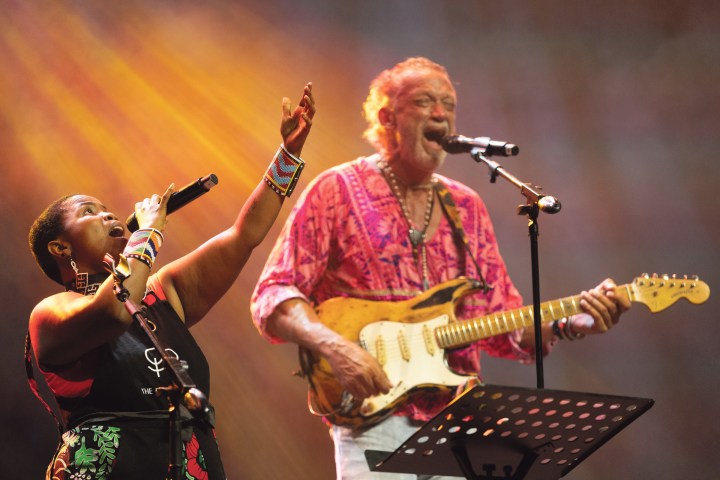
The Klein Karoo Nasionale Kunstefees was a feast to behold with its site-specific work created along with the community and a host of talented artists willing to uncover and probe painful pasts.
Once upon a time there was a fabled railroad that connected the Klein Karoo with George and Gqeberha on the coast. There were trains, too, that ran regularly to Cape Town.
It is a spectacular route, but today, sadly, no trains puff or pull their way up the Outeniqua Mountains to the Klip River Valley and beyond. Wool, mohair, ostrich feathers, wheat, fruit, barley and tobacco all passed through Oudtshoorn after its railway opened in 1913. It is now abandoned. But not completely.
Catching the train
This year a remarkable on-site production, Die Swartmerrie (The Black Mare), brought life back to the platforms with swallows’ nests in the rotting eaves, located outside the town. There are metaphors there, of course: the useless tracks; the past and the present converging.
Karoo Kaarte (Karoo Maps) is a multidisciplinary project that kicked off in 2021 and involves recording the oral histories of Oudtshoorn residents.
Two productions, Hierdie Dag (2022) and Droomkraan-kronieke (2023), have been recognised with several significant awards.
Ingenious director and cooperative theatre maker Neil Coppen, co-director of Empatheatre, which is renowned for groundbreaking projects grounded in social justice, heads up the project alongside fellow artists. The talented Tiffany Saterdaght co-directed this piece. Vaughn Sadie, conceptual artist and researcher, brought his vision to the tours and the app and, together with Coppen, drives the initiative.
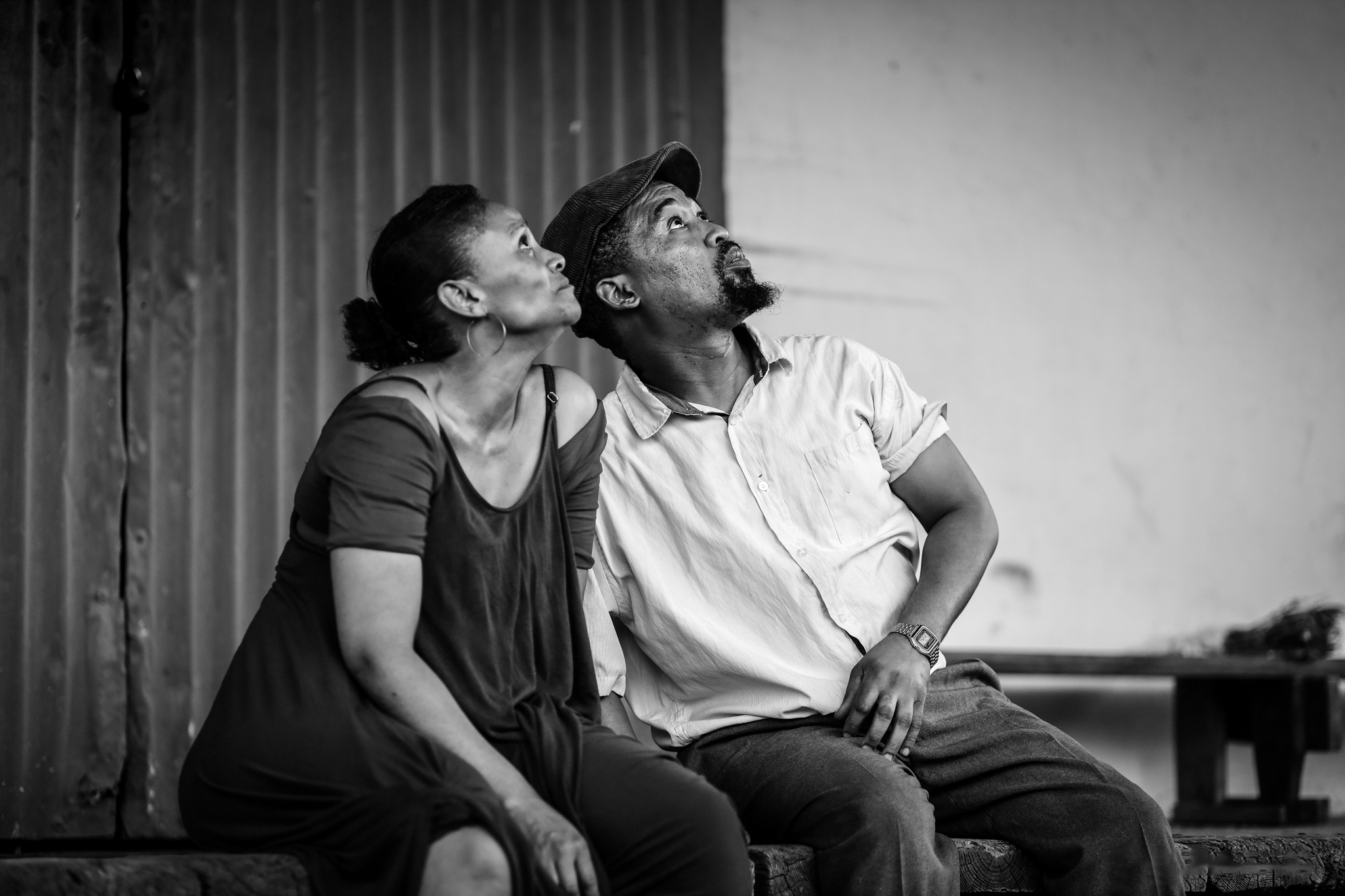
Chantell Phillipus and Theo Witbooi in ‘Die Swartmerrie’. (Photo: Ryan Dammert)
Just look at the list of local talent that participated in the continuing project: Jermaine Bruintjies, Zietske Saaiman, Tristan Horton, Melikhaya Blou, Baart Saaiman, Shandré Harris and Charissa Esau made the sets, designed the lighting, participated in text research and managed the production.
The surprise ending of the play featured the Bridgton UCC Band as extras as well as Azola Mkrola, Wilfred Kock, Libongo Baby, Blou, Semorné Beukes, Jody Leigh de Villiers, Chanell Witbooi, Taytum Sevierus, Nadine Hendriks, Tayla Damons, Errol Esau, Coubireen Naude, Mbuso Jantjies, Siyasanga Building, Keenan Alexander, Liesl Ada and Jade Barry.
All these artists participated in the work, which also yielded an art exhibition, a graphic novel titled Dominos, as well as a guided tour using a specially created app.
The collective delicately told the story of Tjoekie (Theo Witbooi), whose mother caught the train out of town when he was four. He has longed for her ever since and waited at the station with wilted flowers for 40 years. His childhood friend, Frieda (Chantell Phillipus), in town for a visit, tries to coax him back to life, back to reality.
The black mare of the title is the locomotive that once passed regularly through the town and took Tjoekie’s mother. But it was also a machine beloved by his father, who we learn was abusive.
At dusk, audience members are led to the tracks where the story unfolds as the swallows dart in and out of their nests above. And it is spellbinding.
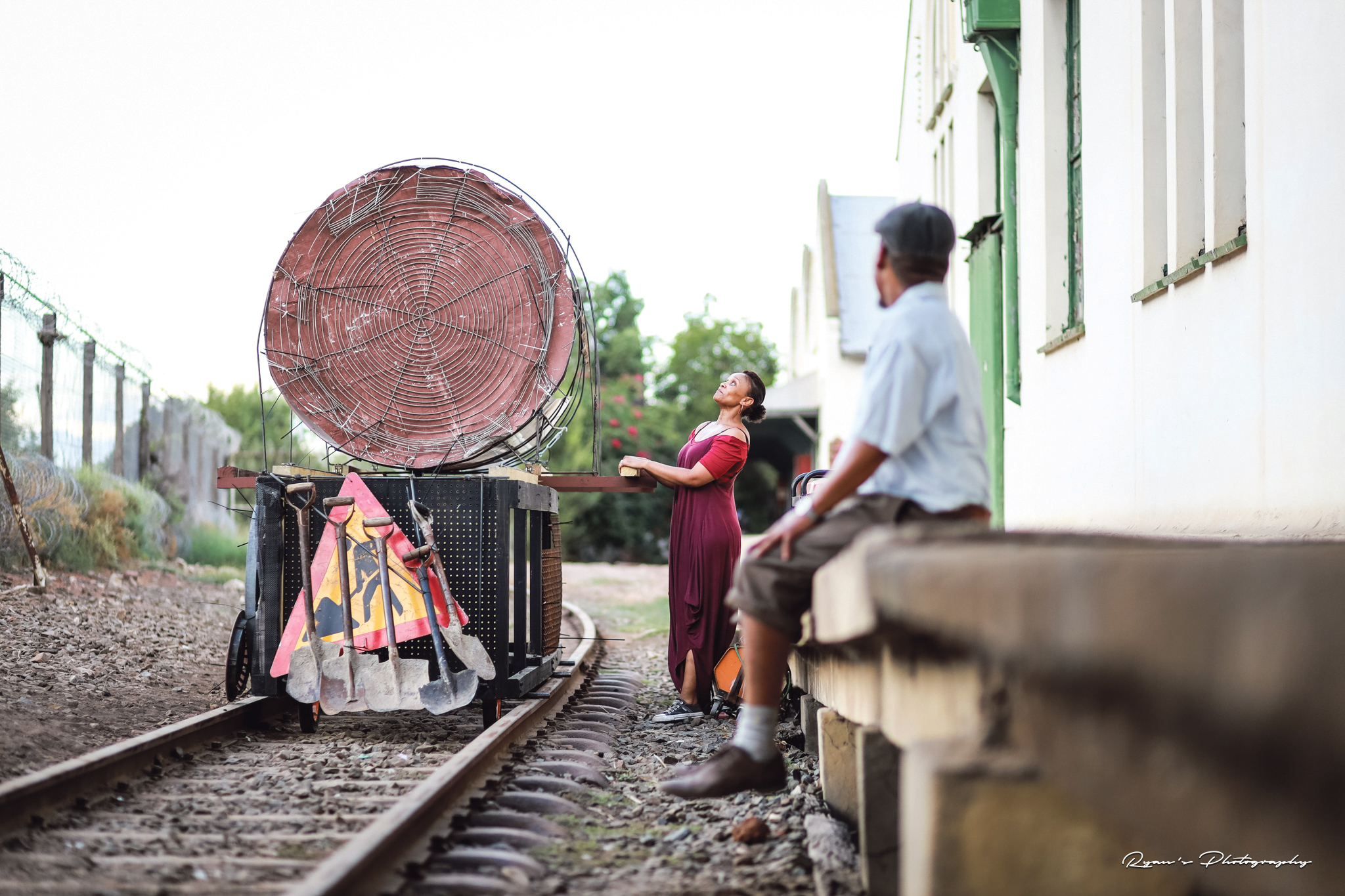
Scenes from the site-specific production ‘Die Swartmerrie’. (Photo: Ryan Dammert)
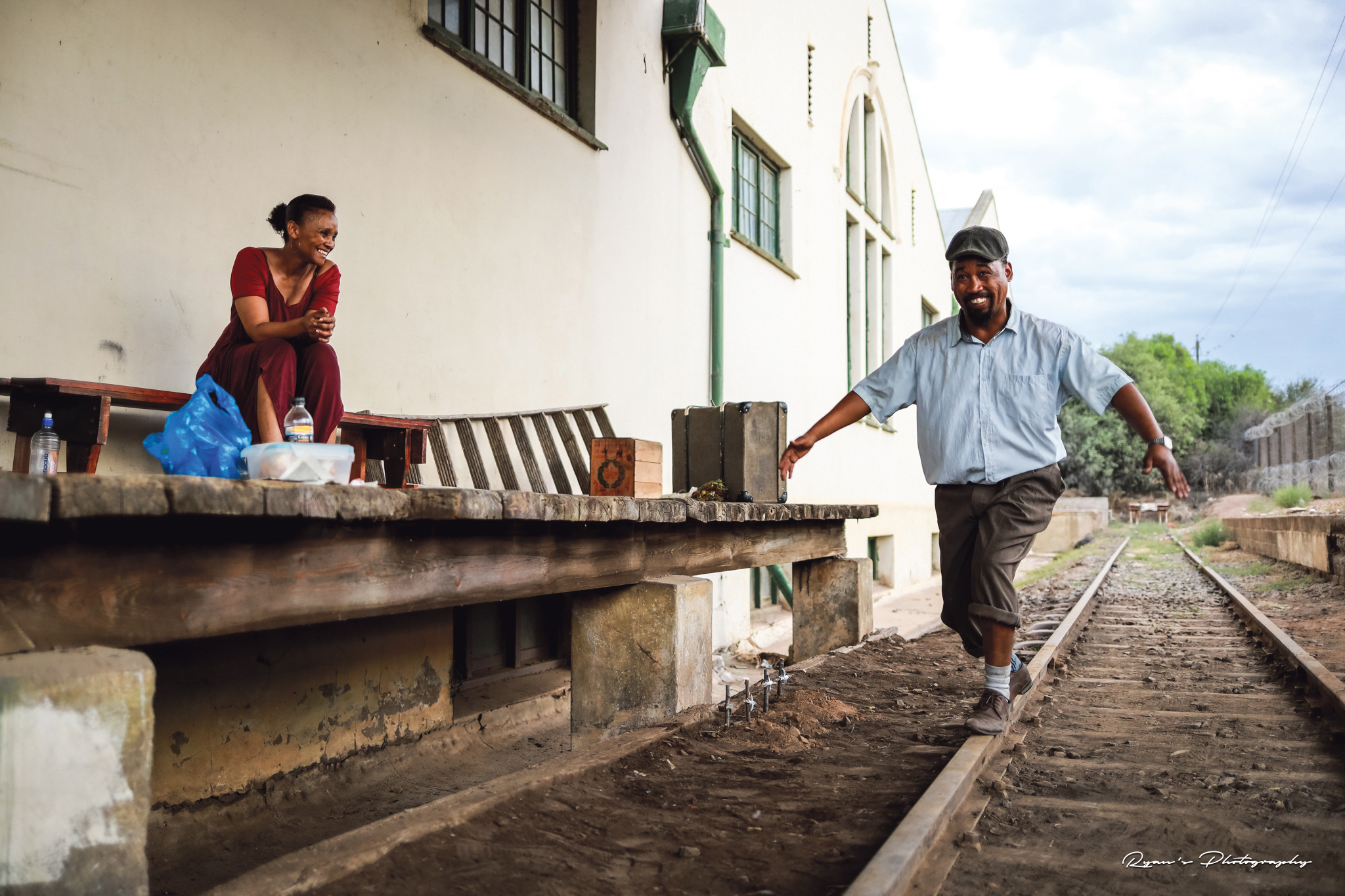
A scene from ‘Die Swartmerrie’. (Photo: Ryan Dammert)
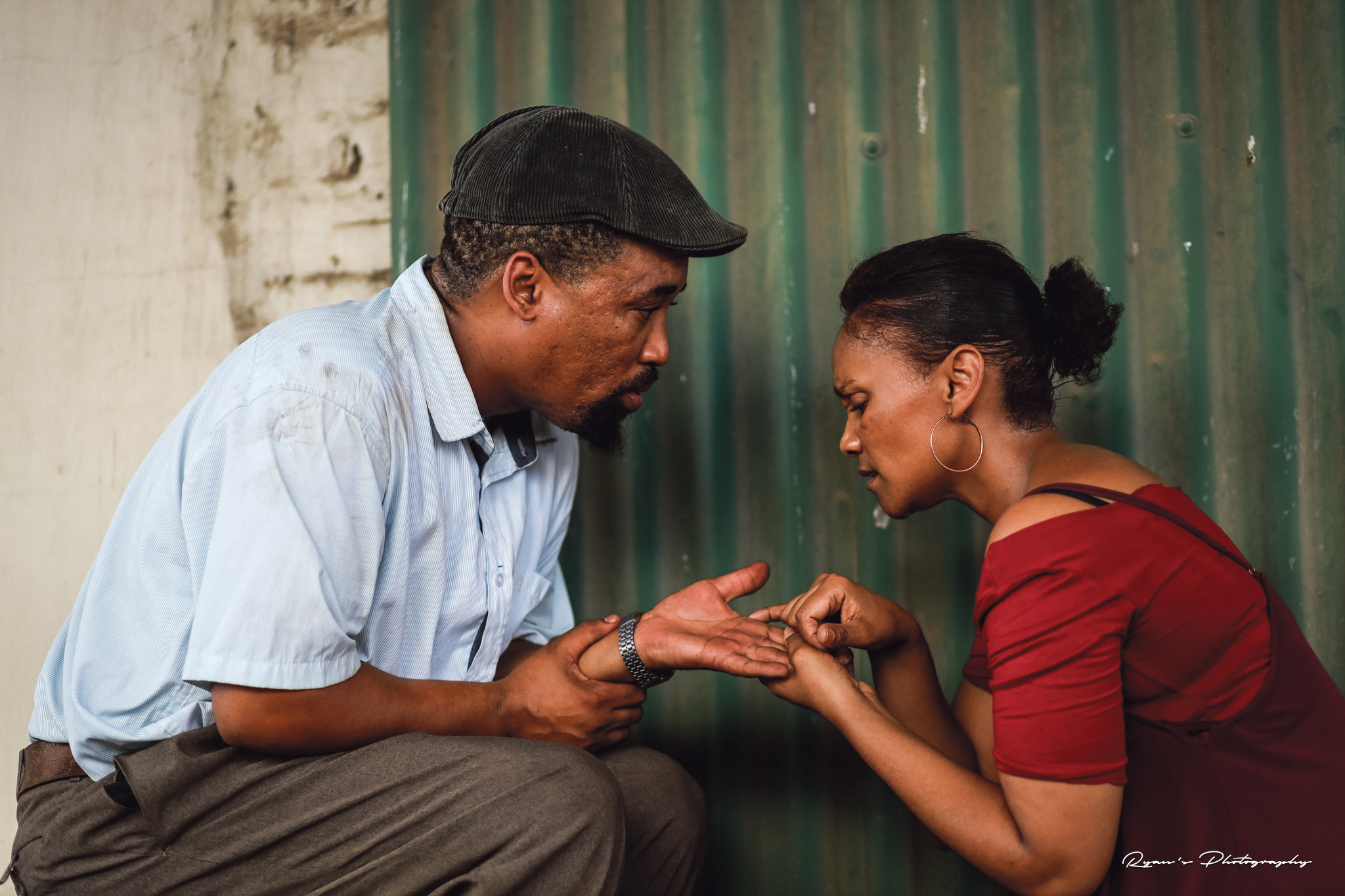
A scene from ‘Die Swartmerrie’. (Photo: Ryan Dammert)
Finding new voices
Festivals such as the Klein Karoo Nasionale Kunstefees (KKNK) as well as the Suidoosterfees, about to take place in Cape Town from 26 April to 1 May, produce more new work than all the state-subsidised theatres combined.
They are shining examples of cooperation between philanthropy, local and provincial government investment and businesses to provide a space for historically marginalised communities to surface vital, new work and grow a generation of young storytellers, dancers, fine artists, theatre makers and lighting, stage and costume designers.
The Suidoosterfees, which turns 21 this year, was born of the spirit of struggle icon Jakes Gerwel and guided by his widow, Phoebe Gerwel, who also established the Jakes Gerwel Foundation.
What began as a small festival has grown into a massive showcase of talent including writers, directors, comedians, dancers and performers, and centred at Artscape.
Gerwel has also donated Paulet House in Somerset East as a retreat for artists, authors and playwrights to explore their craft. Many new works have emerged from this initiative.
Veteran cultural activist, theatre maker and director Mike van Graan has highlighted how, even today, state funding still benefits elites and is centred on cities, leaving rural communities stranded.
“In a society where 55% of the population is considered ‘poor’, with an official unemployment rate of 27% and with the top 10% earning 60% of national income, the role of public funding and policy for the arts generally and for theatre in particular must surely be to enable the majority of the country’s citizens to exercise their right to participate in the cultural life of the community and to enjoy the arts and theatre,” he said.
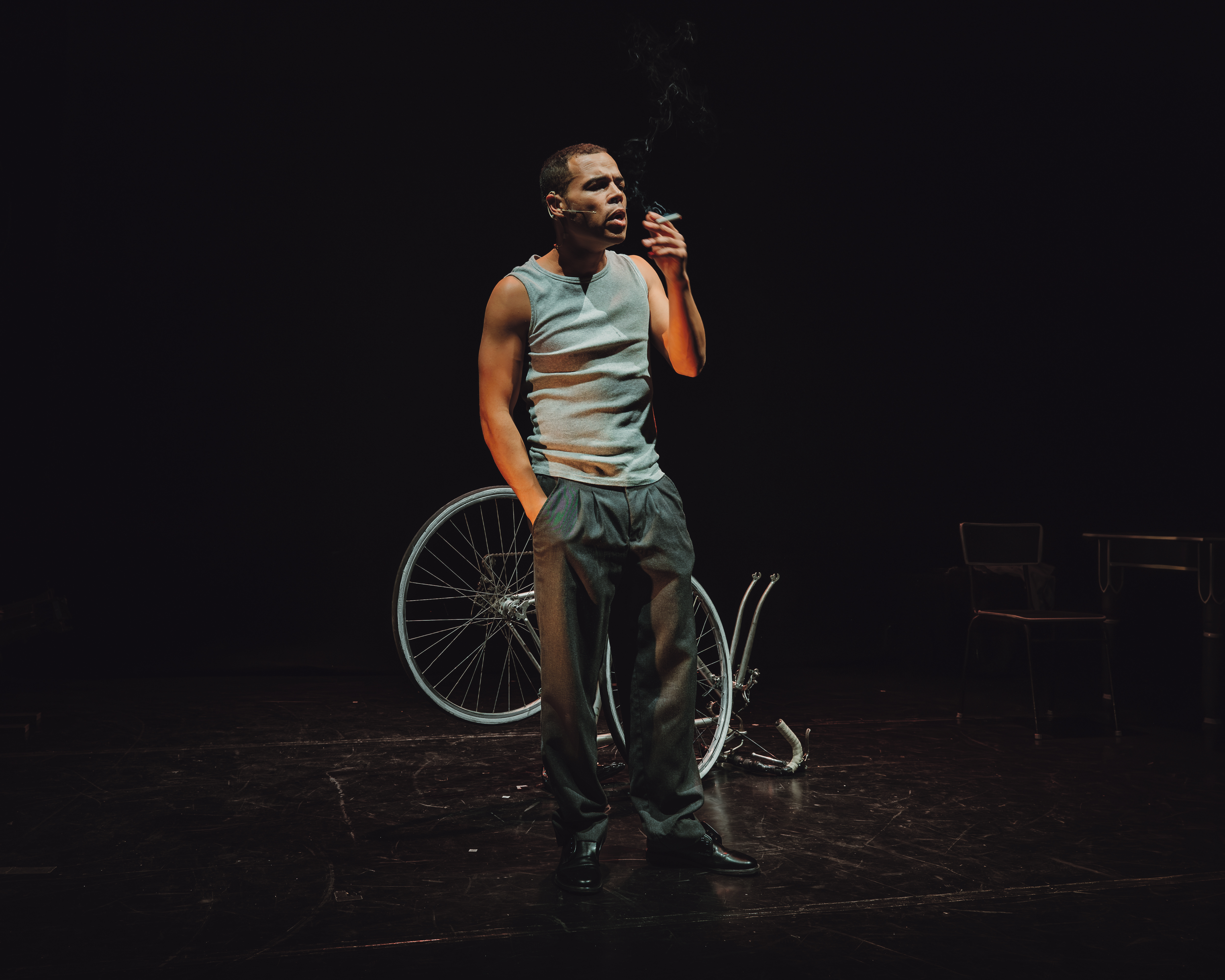
Eldon van der Merwe in ‘Fietsry vir Dommies’. (Photo: Gys Loubser)
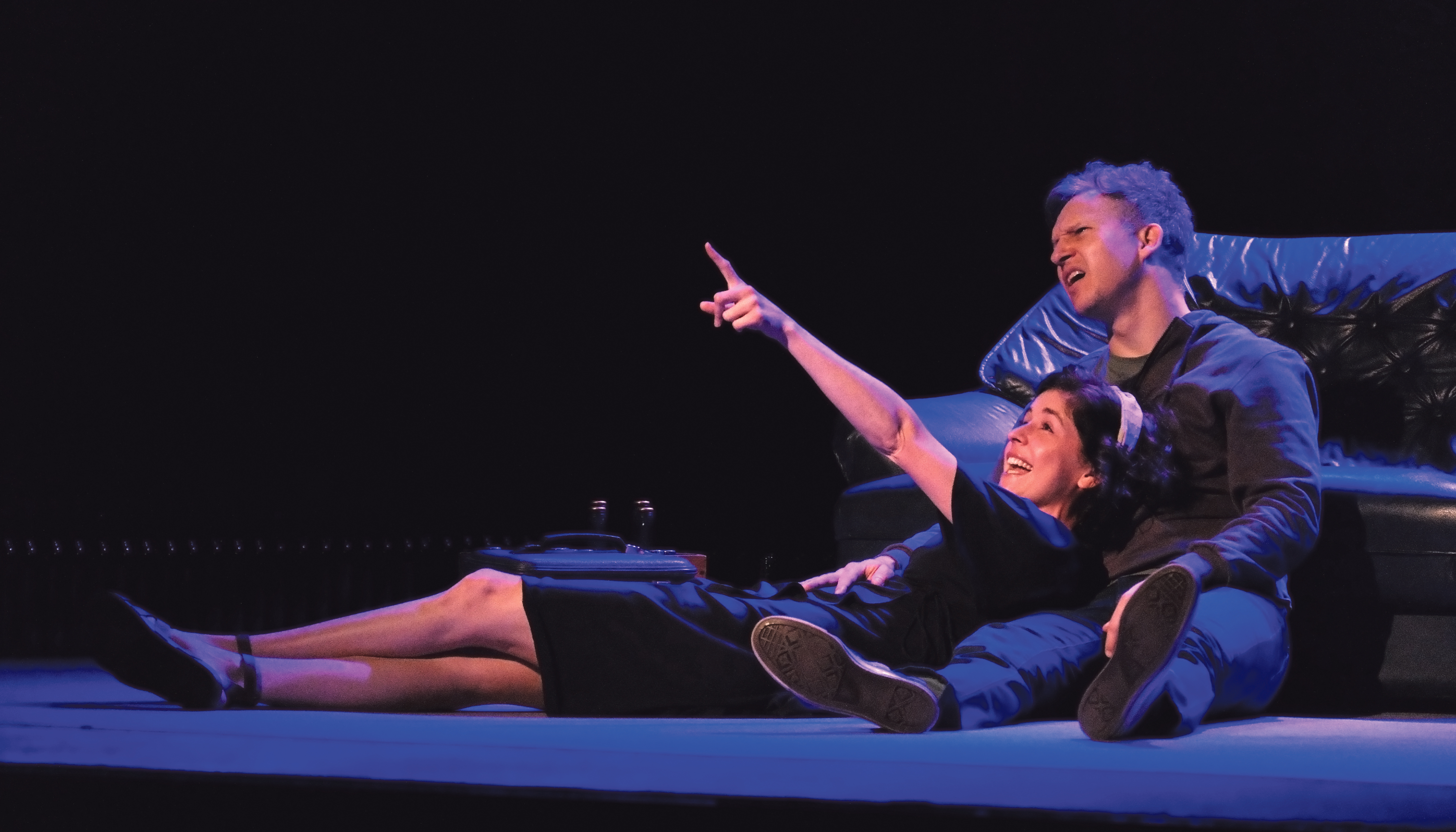
Gideon Lombard and Emma Kotze in ‘Goed wat Wag om te Gebeur’. (Photo: Gys Loubser)
Ismail Mahomed, director at the Centre for the Creative Arts at the University of KwaZulu-Natal, former chief executive at the Market Theatre and former artistic director of the National Arts Festival in Makhanda, said Karoo Kaarte is testimony to what can be achieved working collaboratively “with common purpose over a long-term period to invest in real tangible growth for historically marginalised communities, and where acclaimed artists such as Coppen and Sadie can work with communities over a sustained period and with an understanding that they are only intermediaries through which local communities have found the confidence and built their trust to share their personal histories”.
Mahomed added that this was a model that was not “a tick-box exercise for development work”. It was a “visionary and strategic project” that gave participants ownership of their stories and a “sense of high esteem by being mentored by artists who are creative geniuses and strongly grounded towards advancing South African society, who give them the skills and a platform to share their histories”.
That the KKNK could present this work alongside the festival’s leading stars, said Mahomed, was an indication of how far the festival had transformed itself “from its contested inaugural years”.
Whereas in the past the Huisgenoot tent would host the likes of Steve Hofmeyr and “doef-doef” music, as everyone described it, this year Zolani Mahola and Dozi, YoungstaCPT, festival stalwart Refentse Morake, Spoegwolf and Congo Cowboys featured among the massive line-up.
Young people on school or varsity break attend the festival, either with their parents or not. Schools in the area serve as campsites, which helps stretch the budget.
A full hall of pupils from nearby towns escaped their devices for about an hour, watching plays such as the remarkable Fietsry vir Dommies (Cycling for Dummies) and Rooilug (Red Air).
And, by the way, young people all speak fluent “tannie” in Oudtshoorn, including the parking attendants.
Transcending language
Though the bulk of work at the festival remains in Afrikaans, there are many English-language offerings, including Van Graan’s remarkable touring piece, My Fellow South Africans, with Kim Blanché Adonis.
Stand-up comedy this year featured Marc Lottering, Tollie Parton, Yaaseen Barnes, Stuart Taylor, Alfred Adriaan, Ambrose Uren, Conrad Koch, Dalin Oliver, Melanie du Toit, KG Mokgadi, Kate Pinchuck and Lindy Johnson.
What was remarkably evident in the Afrikaans-language texts was the deep excavation of pain and intergenerational wounding. It was not a pain born of rage or anger, but a pain born of acceptance, a confrontation with the self and history, and then finally a realisation that, to move forward, these ghosts must be confronted.
Stage phenomenon Sandra Prinsloo featured in three major productions. In Op die Hoek van Styx en River Is Nora per Abuis met die Dood Oorgeslaan (translated as “Nora Finds Herself Between Life and Death”), she plays a woman whose husband has died “on the border”, or so she thinks.
This is once again a text – by Henque Heymans and directed by Toni Morkel – about loss, pain and acceptance. Nora (Prinsloo) has lost a son and a husband and must make a choice when she finds herself in farcical purgatory.
David Viviers plays a series of bureaucratic guides in this stage of the afterlife as she navigates her way in the liminal space. It is hilarious and sore all at the same time.
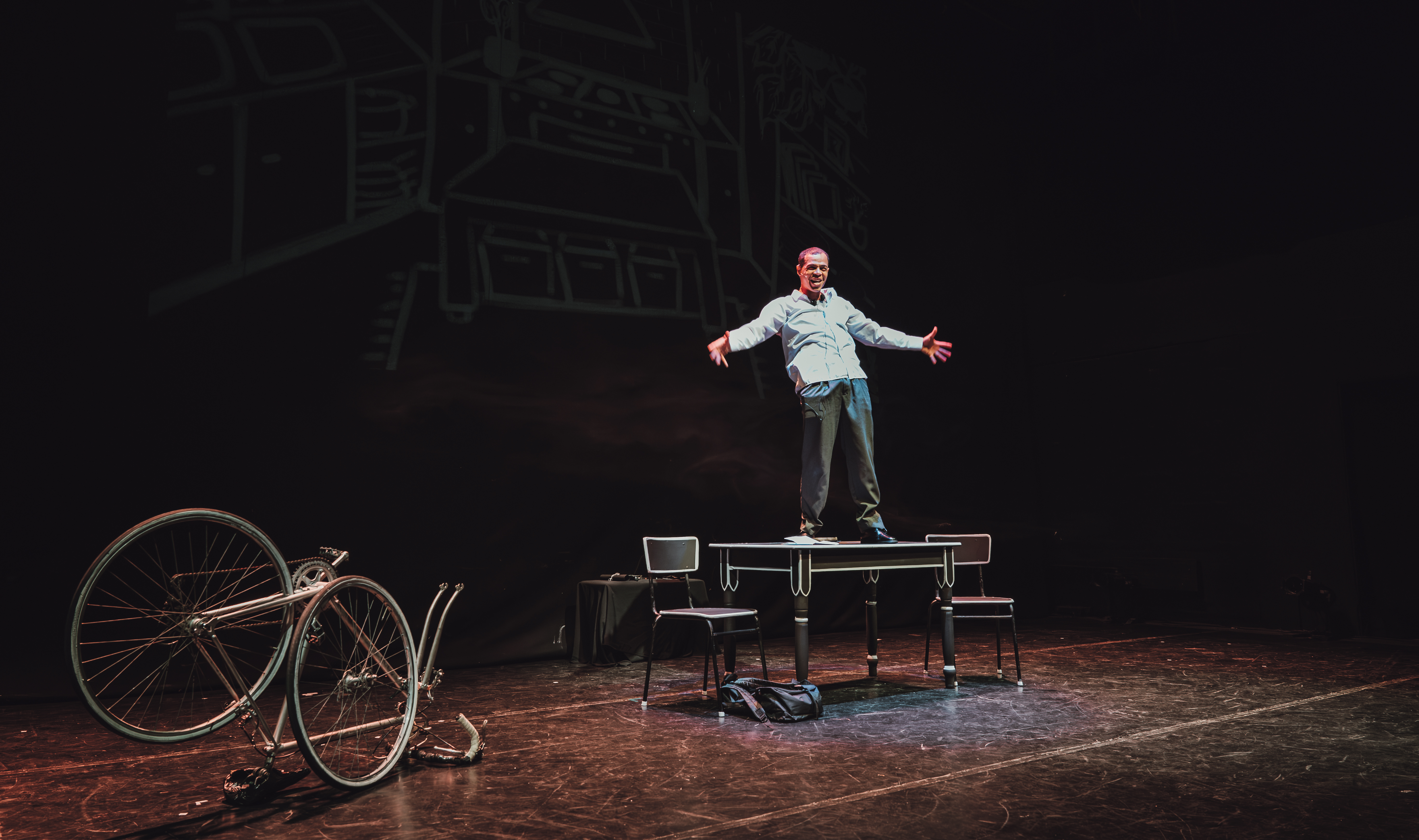
Eldon van der Merwe in ‘Fietsry vir Dommies’. (Photo: Gys Loubser)
Before the show, performed in a South African National Defence Force hall, I was photographing an old “buffel”, or armoured vehicle, with a red cross parked behind the venue. A man, white, neatly dressed, in his mid-sixties stood next to me, doing the same.
“These are the same vehicles we used on the border. A lot of young men were resuscitated in them,” he remarked.
And then, without rancour or anger, he added: “They fucked me up.”
Look up and outwards
In Goed wat Wag om te Gebeur (Things that are Waiting to Happen), a young man, Hendrik (Gideon Lombard), returns to his childhood home to excavate deep and painful memories that will not be exorcised.
There he encounters a shell of his mother (Antoinette Kellerman), his sister, and a former wife (Emma Kotze).
For the man I encountered at the military ambulance, this must have been searing to watch. Yet here he was, collectively experiencing a past many carry with them and have not shared.
Van Graan wrote in 2019 about the then Department of Arts and Culture, which had a budget of R4.6-billion for that year: “There is money for the arts and culture sector (and this is besides funding from other tiers of government, private-sector sponsorship, international donors and the National Lotteries Commission). There is phenomenal talent, and citizens throughout the country, no matter their income, have a right to experience and have their lives bettered by having access to the excellent theatre, dance, music and other art forms.
“All that is required now is vision, political will and a real commitment from the government to work with credible civil society structures in making this happen.”
Sadly, as elsewhere in South African life, citizens are doing it for themselves. For now. With the help of generous sponsors that keep the arts alive. But the reach and impact on the cultural economy and employment could be so much greater if all of this were understood deeply by politicians.
As Mahomed said, this should be a national initiative that could be expanded across the country. Imagine then, if our rail network is restored and towns become more accessible and cheaper to reach.
Many of us who attended this year’s festival wondered where those South Africans who only speak English go to find direction, to check the pulse of fellow citizens.
And what about other official languages and what can be mined there? Imagine it!
Festivals such as the KKNK, the National Arts Festival, Aardklop in Potchefstroom, the Woordfees in Stellenbosch, the Kalfiefees in Hermanus and several others provide a lifeline to artists and culture in this country. The benefits are there for all to see. DM
This story first appeared in our weekly Daily Maverick 168 newspaper, which is available countrywide for R35.
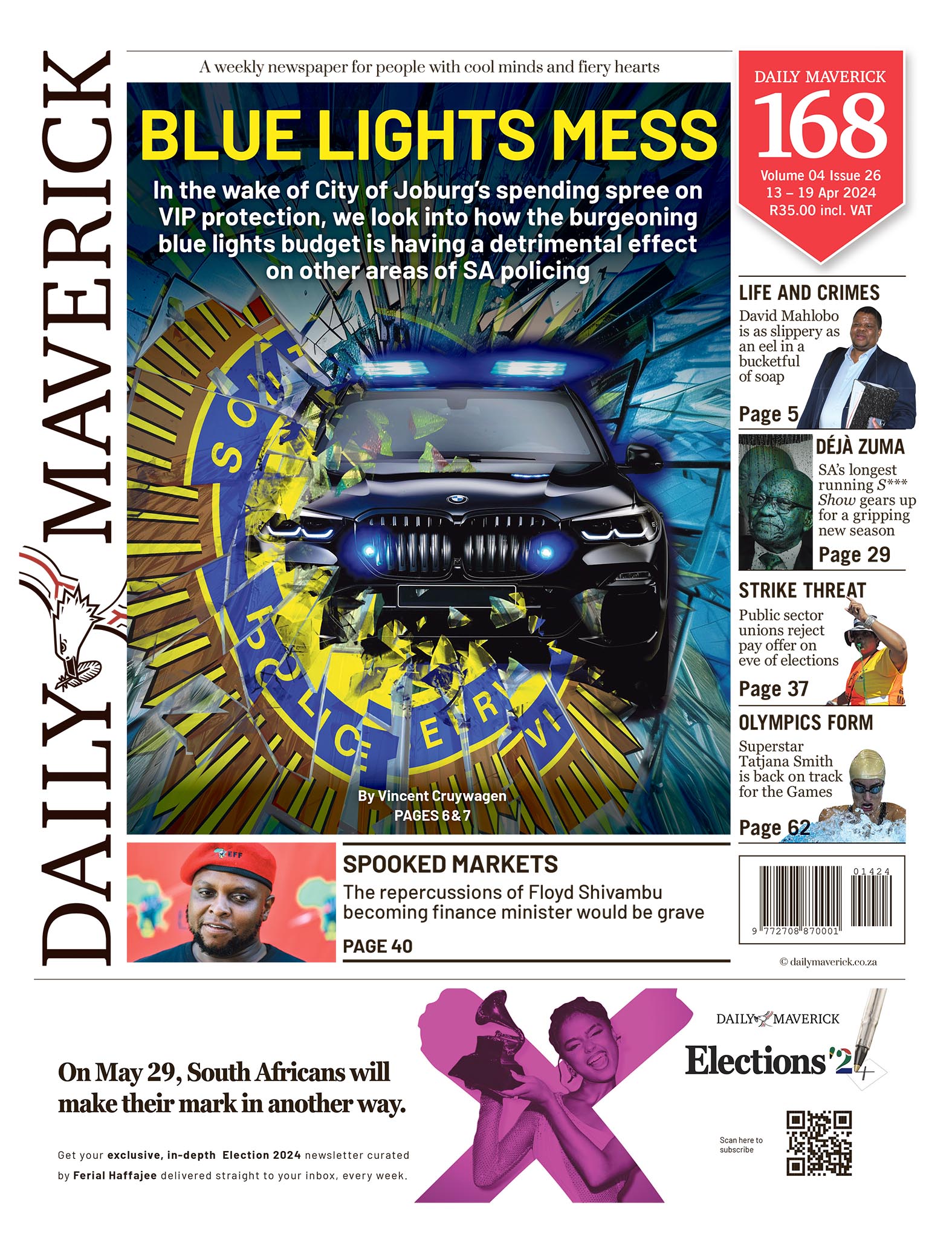






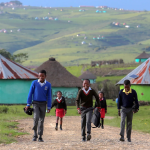













Arts Festivals are a vital platform for artists. One festival provides work for at least 200 artists, 40 specialised technical personnel, 300 direct job opportunities and 800 indirect jobs for locals. It generates roughly 50 million into the local economy in just 10 days ( as per official university impact studies) and create a market for 450 vendors to showcase their products and unique food experiences. Sadly, as you mention Marianne, no political will to fund these projects and some festivals receive literally zero funds from any sphere of government. They are reliant on private sector funding from corporates and organisations as well as self generated monies. Sad state of affairs when arts and culture are left behind.
Last paragraph perfectly sets it up for the festival to be “transformed” by the likes of a Lesufi. The use of Afrikaans will be be deemed to be racist and exclusive. KKNK will be pressured to use more and more English. As the festival loses its own sense of culture and history the audience will disappear and with it the sponsors. Hope I am wrong but we have seen this happen so often.
Bin the indulgent “blue lights” and put the money into the arts. There’s a manifesto item I could get behind.